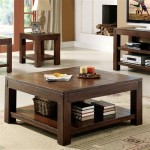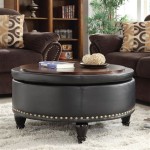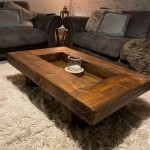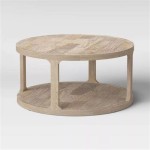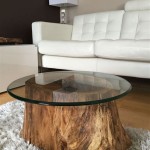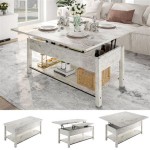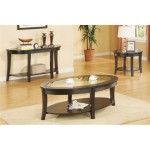Metal Table Legs: A Robust Foundation for Your Coffee Table
The coffee table, a central element in many living rooms, serves as a functional and aesthetic centerpiece. Its role extends beyond simply holding beverages and magazines; it contributes significantly to the room's overall design and atmosphere. The legs supporting this table are often overlooked, yet they are critical to its stability, durability, and visual appeal. Metal table legs, in particular, offer a compelling combination of strength, versatility, and modern aesthetics, making them a popular choice for coffee table construction and renovation.
Metal's inherent properties lend themselves well to table leg design. Its high strength-to-weight ratio allows for the creation of robust and stable supports without excessive bulk. The material's malleability allows for a wide variety of designs and finishes, ranging from sleek and minimalist to ornate and industrial. Furthermore, metal legs are generally resistant to warping, cracking, and insect damage, common issues that can plague wooden counterparts. This resilience ensures a longer lifespan for the coffee table and reduces the need for frequent repairs or replacements.
The availability of diverse metal types, each with its unique characteristics, further broadens the appeal of metal table legs. Steel, iron, aluminum, and stainless steel are prominent choices, each offering distinct advantages in terms of strength, cost, and corrosion resistance. The selection of the appropriate metal type is crucial to ensure the longevity and suitability of the legs for the intended application.
Strength and Stability: The Foundation of Functionality
When considering table legs, strength and stability are paramount concerns. A wobbly or unstable coffee table is not only inconvenient but can also be a safety hazard. Metal, compared to other materials like wood or plastic, offers superior structural integrity. Steel, in particular, stands out for its high yield strength, meaning it can withstand significant loads without permanent deformation. Cast iron table legs, while heavier, provide exceptional stability and are often chosen for larger or heavier coffee tables.
The design of the metal leg also plays a crucial role in its stability. A wider stance and a well-engineered attachment point to the tabletop significantly enhance stability. Designs that incorporate cross bracing or other reinforcing elements further improve the leg's ability to resist lateral forces and prevent wobbling. The thickness of the metal used in the leg's construction also contributes to its overall strength and stability. Thicker gauges of metal provide greater resistance to bending and buckling under load.
The method of attachment is equally critical. Metal legs can be attached to the tabletop using a variety of methods, including screws, bolts, and welding. Threaded inserts provide a secure and easily reversible connection, allowing for disassembly and reassembly if needed. Welding, while providing a permanent and exceptionally strong bond, requires specialized equipment and expertise. Regardless of the chosen method, ensuring a firm and secure connection between the leg and the tabletop is essential for optimal stability.
Furthermore, the weight distribution of the coffee table itself impacts its stability. Placing heavier items towards the center of the table minimizes the strain on the legs and reduces the likelihood of tipping or wobbling. Regular inspection of the legs and their attachment points is also recommended to identify and address any signs of loosening or damage before they compromise the table's stability.
Aesthetic Versatility: Complementing Diverse Design Styles
Beyond their functional benefits, metal table legs offer significant aesthetic versatility, seamlessly blending with a wide range of interior design styles. From sleek and modern to rustic and industrial, metal legs can be tailored to complement the existing décor and enhance the overall visual appeal of the living room. The variety of finishes and designs available ensures that there is a metal leg option to suit almost any taste and preference.
For modern and minimalist interiors, sleek, hairpin-style metal legs in brushed stainless steel or powder-coated black provide a clean and understated look. These legs often feature simple lines and a low profile, allowing the tabletop to take center stage. In contrast, industrial-style interiors benefit from the rugged charm of cast iron or raw steel legs. These legs often feature a more substantial design, with exposed welds and a distressed finish, evoking a sense of history and craftsmanship.
For more eclectic or bohemian interiors, metal legs can be customized with unique finishes and embellishments. Painted metal legs in vibrant colors or metallic finishes can add a pop of personality to the coffee table. The addition of decorative elements, such as intricate carvings or geometric patterns, can further enhance the leg's visual appeal and create a distinctive focal point. Powder coating provides a durable and attractive finish that is available in a wide range of colors and textures, allowing for endless customization options. The ability to customize the finish allows metal legs to seamlessly integrate into almost any existing design scheme.
The shape and design of the metal leg also contribute significantly to its aesthetic appeal. Tapered legs create a more elegant and refined look, while straight, square legs offer a more modern and minimalist aesthetic. Hairpin legs, with their distinctive V-shaped design, add a touch of retro charm. The choice of leg shape is a crucial factor in determining the overall style of the coffee table, and careful consideration should be given to ensure that the leg design complements the tabletop and the surrounding décor.
Longevity and Maintenance: Ensuring Enduring Value
Durability is a key advantage of metal table legs. Their inherent resistance to wear and tear ensures a long lifespan, making them a cost-effective investment in the long run. Unlike wood, metal is not susceptible to rot, insect infestation, or significant warping due to changes in humidity. This resistance to environmental factors ensures that metal legs maintain their structural integrity and aesthetic appeal for years to come. The choice of metal type influences its resistance to corrosion and environmental damage. Stainless steel and powder-coated steel offer enhanced protection against rust and other forms of corrosion, making them ideal choices for humid or damp environments.
Routine maintenance for metal table legs is generally minimal. Regular cleaning with a soft cloth and a mild detergent is usually sufficient to remove dust and grime. For stubborn stains or marks, a specialized metal cleaner may be used, but it is essential to follow the manufacturer's instructions carefully to avoid damaging the finish. Avoid using abrasive cleaners or scouring pads, as these can scratch or dull the surface of the metal. Polishing can restore the shine to metal surfaces, but it's important to use the appropriate polish for the specific metal type.
Periodic inspection of the legs and their attachment points is recommended to identify and address any signs of damage or loosening. Tightening loose screws or bolts can prevent wobbling and ensure the stability of the table. If the legs are exposed to moisture or humidity, it's essential to ensure that they are properly sealed or coated to prevent rust formation. Small scratches or chips in the finish can be touched up with a matching paint or coating to prevent corrosion and maintain the leg's appearance. Addressing minor issues promptly can prevent them from escalating into more significant problems and extend the lifespan of the table legs.
Metal table legs represent a practical and aesthetically pleasing choice for constructing or renovating coffee tables. Their inherent strength, design versatility, and long-term durability make them a valuable investment for any living room. By carefully considering the type of metal, design, and finish, homeowners can select metal legs that perfectly complement their existing décor and provide a stable and stylish foundation for their coffee table.

Metal Coffee Table Legs Flowyline Design

Metal Coffee Table Legs For Solid Wood Top Spider Steel Modern Xsavi 60

2pcs Steel Table Legs Metal X Shape Dining Bench Coffee Desk

Coffee Table Legs 212 Cleo 16h Modern Diy Furniture Flowyline Design

12 In Skyline Matte Black Square Metal Landscape Coffee Table Legs Pipe Decor

Metal Coffee Table Legs Modern Steel For Your By Symmetry Hardware

Custom H Table Leg 3 Wide Rustic Steel Sold Individually End Farmhouse Coffee Legs Bench Diy

Gzxs Modern Mid Century Wood Coffee Table With Metal Legs 47 24 Rectangle Center For Living Room Bedroom Apartment Brown Com

Metal Coffee Table Base Ohiowoodlands Legs

18 In Skyline Matte Black Square Metal High Rise Coffee Or End Table Pipe Decor
